Switching to Shopify with Downpay deposits unlocked 10% of Gainsville’s revenue
A new Shopify store using Downpay for deposits cut friction for the custom furniture store Gainsville, growing their online sales from zero to 10% of revenue.
A blocker turned breakthrough, a replatforming that delivered
[Our old site] put up a wall. They’d get to the cart, and they’d be hesitant to move on. And then you’ve lost the customer.
— Rick Gainsmith, Operations manager, Gainsville
Gainsville has been selling high-end furniture in Australia for three generations. Known for their made-to-order craftsmanship and deep customization options, the Gainsmith family have built a loyal customer base who even fly to Melbourne from out of state to visit their stores. But when it came to selling online, their old WordPress website couldn’t keep up. The combination of long lead times and requiring payment up front created friction for their high-value products.
With their new Shopify store and the Downpay app powering deposits right in their branded checkout—a function that’s not native to Shopify—Gainsville has closed that gap. Now, half of their online customers choose to pay a deposit instead of the full amount up front, and online sales have grown from almost nothing to 10% of their revenue and are still climbing.
Here’s how operations manager Rick Gainsmith describes it:
Read on to learn about:
- Gainsville’s story
- The barriers customers faced ordering furniture with their WordPress site
- Moving an in-person partial payment experience online
- How using Downpay let Gainsville move to Shopify
- Gainsville’s huge sales results
Gainsville: From used fridges to luxury furniture
Operations Manager Rick Gainsmith’s grandfather George supported his family in 1960s Melbourne however he could. He had trained as a cabinetmaker, but he also drove taxis and worked as a carpenter. In 1964, he opened a storefront: a second-hand shop selling products he refurbished himself, which he called Gainsville.
“He started with pretty much anything he could get his hands on to sell,” Rick says. “But where he found his niche was secondhand televisions and fridges, and then he moved into furniture.”
Rick’s father Warren was responsible for the shift to designing and selling furniture manufactured in Melbourne. “He got in a lot of trouble for throwing out the old televisions and fridges,” Rick says. “But the business moved on.”
When Rick and his brother Mark and sister Andrea began working there, the store’s furniture still came from local suppliers. But his father had ambitious plans. Warren started bringing in more imported, high-end furniture from all over the world, which led to a focus on made-to-order products.
Overseas suppliers struggled to support the customization and consistent quality that they expected, however, and Gainsville took control. They opened their own factory in 2016, which also unlocked selling worldwide.
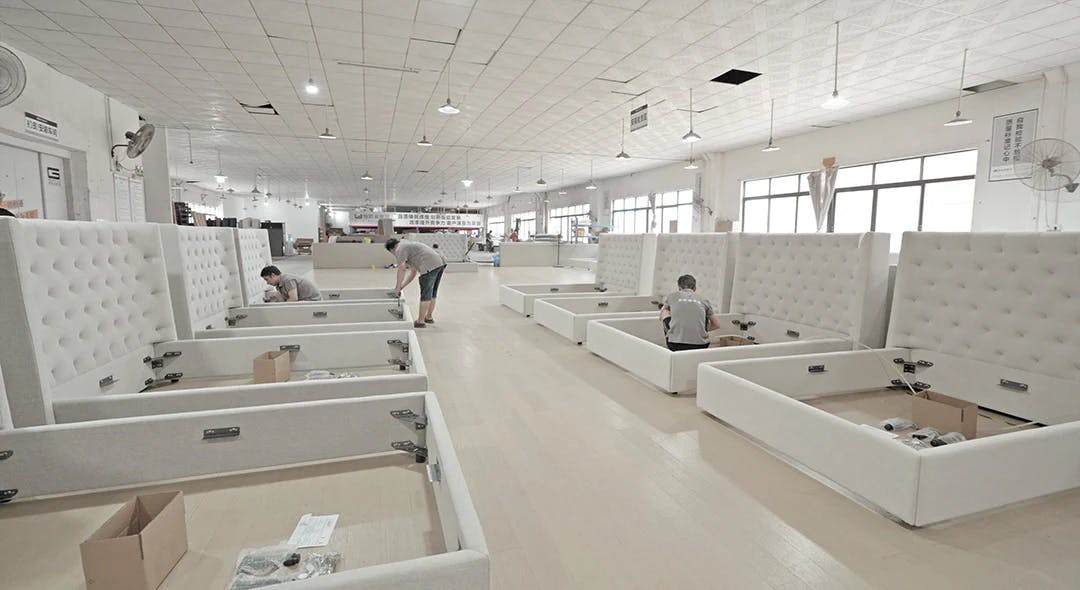
The bed workshop at Gainsville's factory.
"That's where we are now. We’re mid- to high-market, a lot of custom options, a lot of made-to-order," Rick explains. "It’s neither quick nor cheap, but in the end, our customer reviews are always 'great quality, great product, great service.'
"You can't be perfect at everything, but I think we've got the right balance now."
But Rick didn't always feel this way.
The problem: Friction from up-front payments
As the market evolved, Gainsville had moved into ecommerce as well as selling from their three retail locations.
But by 2023, they knew their WordPress site was holding them back. It worked great as a catalog, but next to no sales were going through their site.
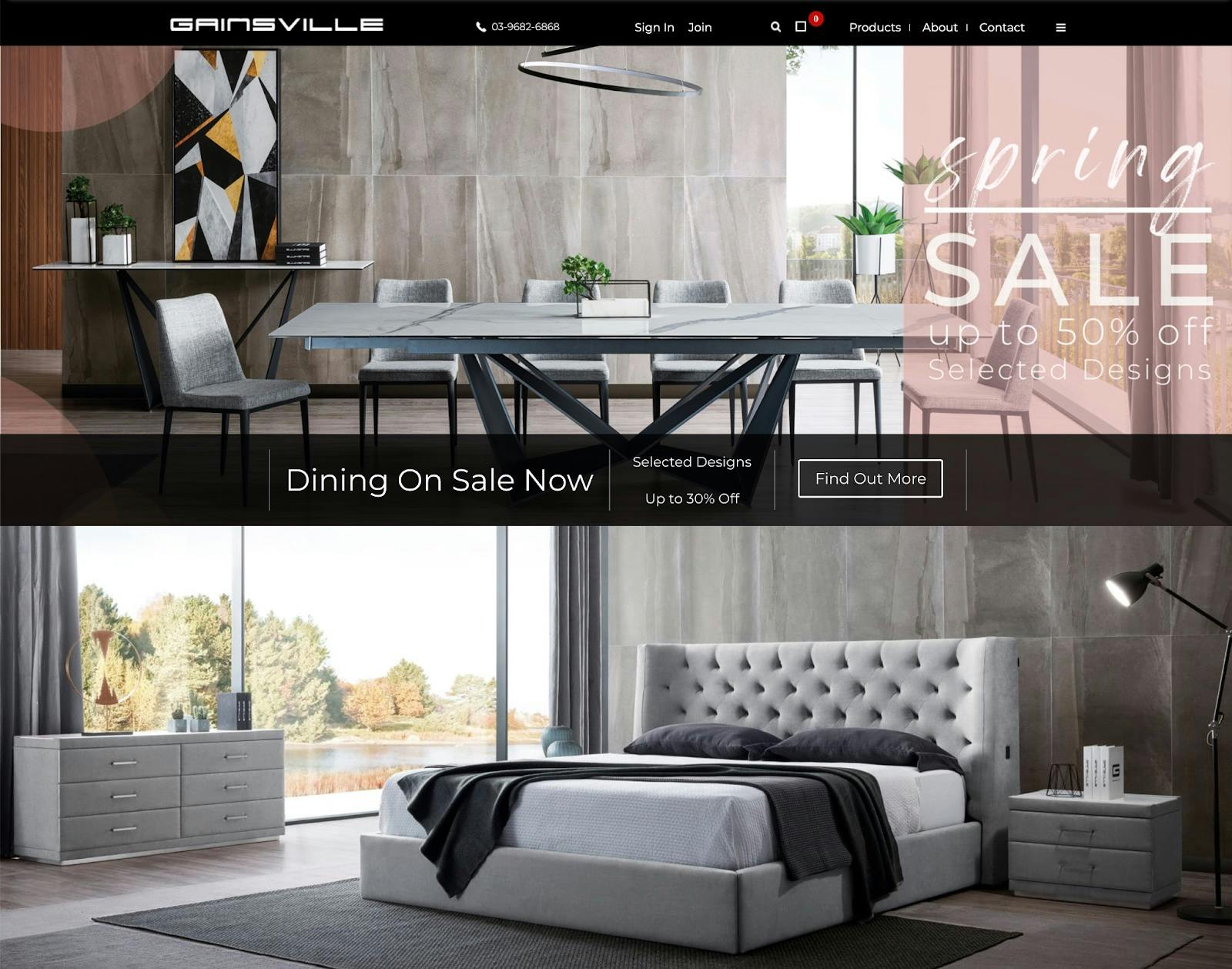
Gainsville's WordPress site in 2022
The reasons?
- Customers could only complete orders online by committing to the full cost up front.
- They couldn't represent their full suite of customization options.
Gainsville had been taking 30% deposits in store or over the phone for many years—standard practice for made-to-order furniture and high-value goods in general.
But on their website, people browsing $10,000 sofas would see the full price, only a couple of options, and a 12-week lead time. And then they'd abandon their carts, and they wouldn't pursue any other channels.
As well as being able to spend that much at once, up-front payment required customers to have a huge amount of trust in Gainsville, Rick says.
"It put up a wall," Rick continues. "They'd get to the cart, and they'd be hesitant to move on. And then you've lost the customer."
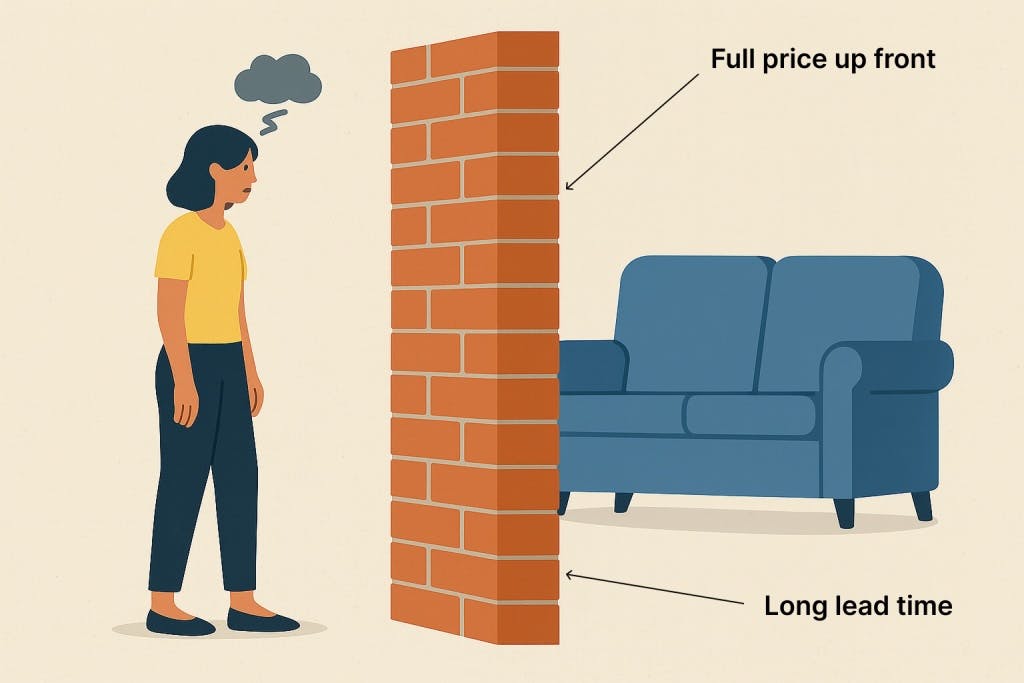
Exactly like this.
The solution: Taking the deposit experience online
Rick knew they needed a way to bring that proven deposit experience online.
A new site was also an opportunity to improve it, since phone orders came with an increased risk of credit card fraud and many potential customers lived outside of easy driving range to pay in person.
Implementing deposits on their current website was no easy task, however.
"It was a monster of a creature that we'd had for 10-15 years," Rick says. Modifications were stacked on modifications in order to meet their needs.
To set up all their product options along with deposits on their current site, developers quoted them exorbitant fees. Others said it couldn't be done and that Gainsville would need a fully custom site and ongoing development work to maintain it.
But Gainsville found a better solution than either, and it came in at less than a tenth of the amount.
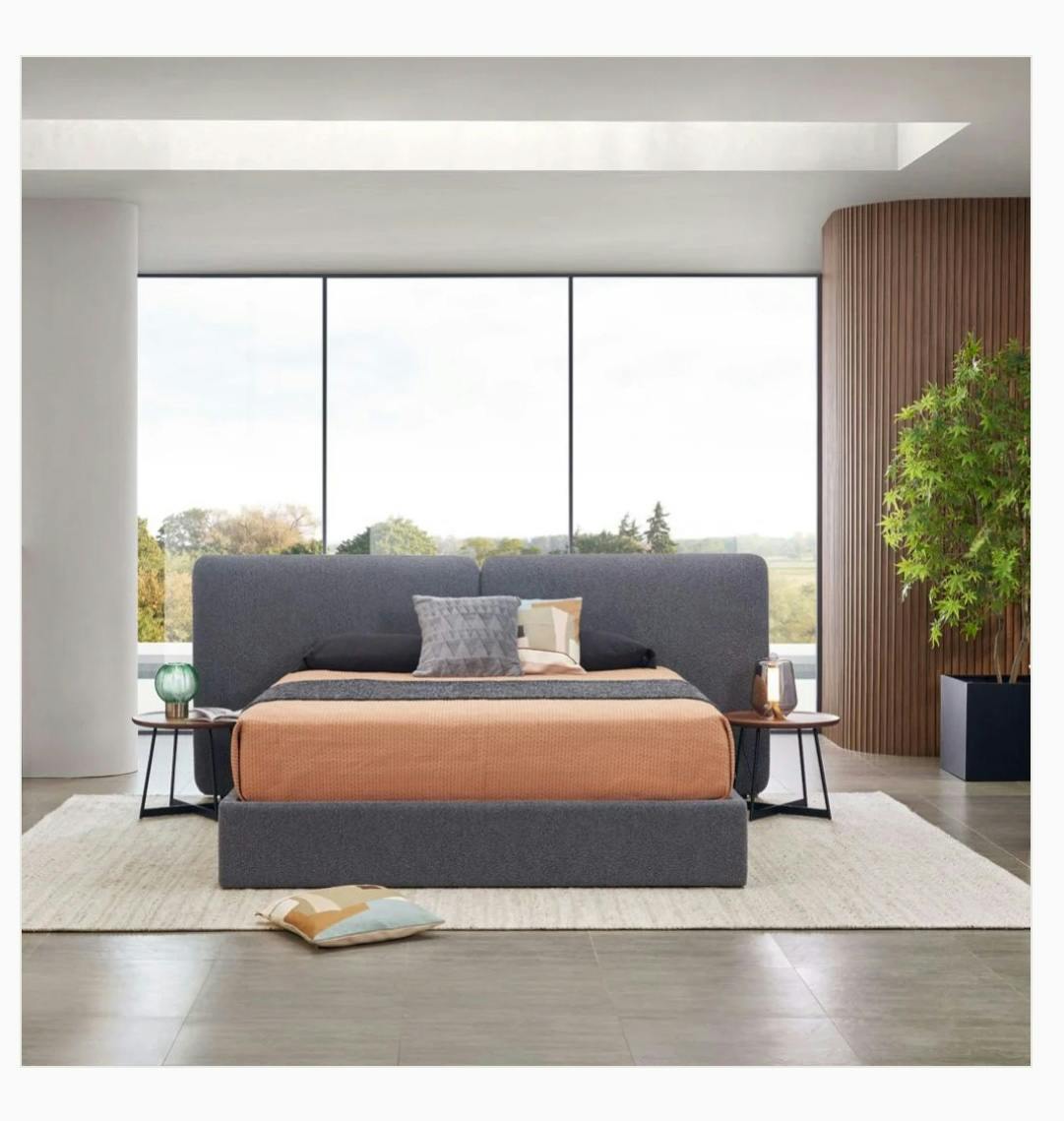
Why Downpay: Enabling the switch to Shopify with deposits
By replatforming to Shopify, using the Downpay app to take deposits and a product options app for customization, Gainsville was able to build the customer experience they wanted and launch everything at the same time.
Shopify doesn't support deposits out of the box, and Downpay was an obvious choice for Gainsville to fill that gap.
As well as Downpay's native integration with Shopify, it was built by former Shopify employees who know the platform—as well as the needs of made-to-order furniture businesses—intimately.
Now, Gainsville's customers pay a 30% deposit by default, with the rest due before delivery, just like in-store.
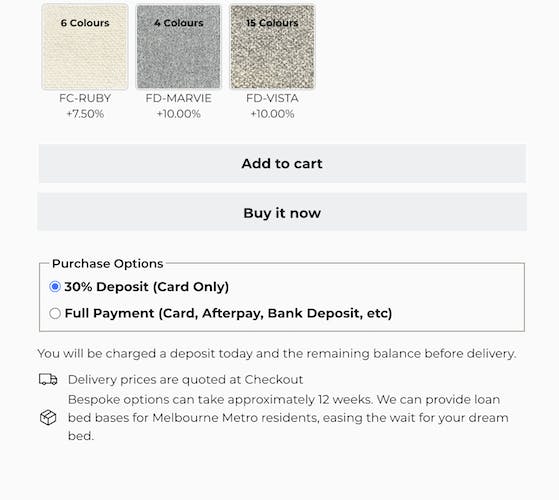
With Downpay, Gainsville can offer the deposit option on product pages as well as maintaining the choice to pay in full.
"It's a lot easier than gaining the trust you need to hold $10,000 of somebody's money for three months," Rick says.
With Downpay, customers stay within Gainsville's Shopify checkout with no third-party branding or confusing redirection, and Gainsville's team can manage orders through the Shopify admin.
The product options app they chose worked perfectly with both as well.
"They all married in fantastically," Rick says.
When the product is ready to deliver, Gainsville has the option to collect the balance on-platform, by manually or automatically charging it to the card on file, or off-platform.
"We finally solved the biggest challenges of our previous website," Rick says.
The results: Customer trust and revenue growth
Downpay helped Gainsville remove the biggest barriers to their online checkout: perceived risk and affordability.
Customers are more comfortable committing to custom pieces with long lead times when they only need to pay a fraction up front, even if they aren't able to come into a store and sit on a sofa to try it out.
"If you're providing enough information and photos, you're removing the barrier by offering a small deposit. You've built this trust with them and you're offering an easy method to purchase," Rick says.
Since launching the new site:
- In 12 months, online store sales have grown from almost zero to 10% of revenue
- Half of online orders used the Downpay deposit option
And in the last month alone:
- Online sales climbed an astounding 54%
Online sales revenue share over 12 months
Online orders using deposit option
Online sales in last month
"That doesn't show a full representation of online sales either," Rick says. The real number is actually much higher but harder to quantify.
"By showing the customer all of the options and the low deposit on the website, everyone's informed," he says.
A customer may decide they want to buy online, but they commit to the sale through another channel, such as live chat, phone, or in person.
No matter the path they take, Rick says, "people are pulling the trigger—and that’s great."
Further Reading
Check out other case studies to learn how Downpay enables more sales for Shopify merchants.